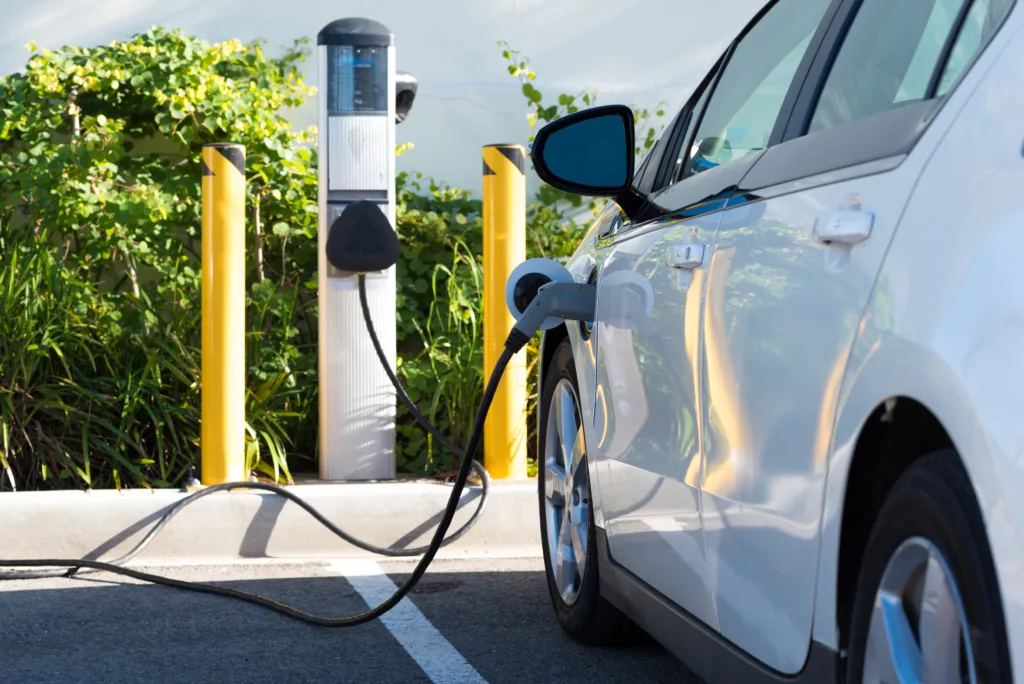TTI’s director, TBU marketing, Americas, Gabe Osorio, explains how the company is tracking EV charging growth to ensure the right parts are ready when needed
The evolution of electric vehicles is racing ahead and it’s hard to keep pace with developments. EVs are seeing significant price reductions, with Ford’s F-150 Lightning by $10k and most Tesla sticker prices decreasing too. The first Tesla Cybertruck rolled off the production line in July and US EV sales are expected to surpass one million in 2023.
Although some EV start-ups and special purpose acquisition companies (SPACS) that appeared during the pandemic are running out of money or filed for bankruptcy and are being acquired by established OEMs, the march toward an all-electric automotive society continues. The big bump in the road is charging technology. Supply can’t support demand and range anxiety is a reality.
Infrastructure is growing
The Infrastructure Bill Congress passed earlier this year is seeing real progress. The $7.5b investment in EV charging means the government is taking this seriously and expansion is coming. Things have been moving in the right direction with 17,000 current Tesla superchargers, 126,000 Level 2 charging ports and 20,000 Level 3 charging ports. Charging ports increased more in 2022 than the preceding three-years combined.
However, we’re a long way from broadscale EV consumer adoptions and relieving consumers’ charging-issue concerns. For the US to be ready for full adoption (considered 40 per cent of new vehicles in 2030), it is estimated we need over quadruple the amount of available charging ports with a target of 2.13 million Level 2 chargers, in addition to in-home chargers, by 2030.
Roadblocks
Broader adoption will require localized infrastructure planning, buy-in and execution down to municipality level. Naturally, the biggest concern is funding. The cost to launch is extreme when the economy is stagnating and consumer confidence is stressed. The recent infrastructure legislation Washington passed is a good start but only a start.
Additionally, according to federal funding legislation, US built charging stations require more than 50 per cent of the products to be sourced by North American Free Trade Agreement (NAFTA) members. This has left suppliers scrambling to set up local production, which is about one to two years away. The government will play an additional role as they legislate requirements, like adding charging stations to housing, retail and publicly owned resources.
NACS adoption
A hot topic in EV charging is the major automotive OEMs adopting the Tesla North American Charging Standard (NACS). Companies were previously developing their own designs and technology but the Tesla standard is more ergonomic, efficient, well designed and powerful. It also adds to the overall availability of charging networks. GM was the first to announce, followed by Ford, Aptera, Rivian, Volvo, Polestar, Mercedes, Nissan and the list will grow.
Tesla open-sourced this standard in late 2022. Once GM announced it would be adopting, other OEMs started falling in line and caught the coupler and inlet manufacturers off guard. Manufacturers are now rushing to design, test and bring to market options for NACS offerings—which is about three to six months away from the first ones arriving with many more in the next year.
TTI is excited about EV charging technology—from power and efficiency to communications and safety. As we make the transition to a net-zero-emissions world, we are positioned to deliver the broadest and deepest inventory of quality components that put EVs on the road and running well.
We also pride ourselves in having seasoned and expert specialists who know technology and market trends to equip customers with the best products, help them integrate designs for optimal performance and ensure designers get the right parts, at the right place, at the right time.

